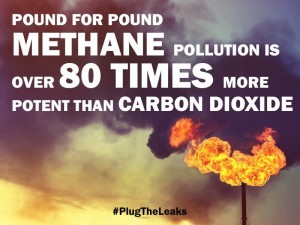Natural gas will turn out to be wrong choice
From the Guest Opinion-Editorial Commentary by S. Thomas Bond, Charleston Gazette-Mail, September 18, 2016
It is now becoming clear that developing unconventional drilling for hydrocarbon fuels is the wrong choice. Two trends moving rapidly work against then: increasing population and global warming.
World population is over 7 billion and heading for 9 billion in a lifetime. Demographics, based on present population and birthrate, makes very dependable predictions.
An increasing part of the population in the developed world is going to be aged and require care, while younger people are increasingly disinclined to have children. However, in other parts of the world the population is increasing rapidly, and will continue to.
The human species combined weight is more than the weight of any other species. Something like one-half the world’s primary production on land (new growth) is devoted to feeding, clothing and sheltering our species. No single species has ever been so “successful.”
The world needs food, fiber, timber and other natural products to sustain humans. Otherwise, political unrest and vast population shifts are going to occur, and likely war and disease. Much of the immigration to Europe from the Middle East now is due to drought, rather than war, because food is not available.
Carbon dioxide in the atmosphere absorbs infrared radiation by jumping to a higher vibrational state, thus converting radiation that would be reflected back into space into “sensible heat,” vibrational energy which can be transferred to all other molecules, and sensed by a thermometer, our skins, and everything else.
We are burning carbon in only a relatively few years derived from geologic layers of coal, oil and gas that have taken millions of years to lay down. The world put 39.8 billion tons of carbon dioxide into the atmosphere in 2015, 2.3 percent more than the previous year, not including carbon dioxide that comes from wildfires.
We need energy. We couldn’t sustain our present population without it. Fortunately, there are other ways to get it. We have crippled our species by not developing something else sooner.
In the early days of drilling, gas was no more than an unwanted byproduct, as it is in the remote Bakken field in the U.S. and in Russia. It is simply burned off into the air. Today with fracking, gas gives the illusion of providing cost effective energy.
I say illusion, because much of the cost is ignored. It destroys large areas of the surface, contaminates aquifers, and dumps carbon dioxide into the atmosphere, not as much as coal, but about 57 percent, by weight. In effect, burning carbon is destroying the earth’s capacity to sustain life, including human life.
In addition, the methane is lost into the atmosphere in sufficient quantity to be a an additional serious global warming gas; in fact, the second most important one due to man. These are real costs of gas, but never taken into the accounting. Gas’ balance sheet has no debit side in public discussion. Environmentally, its primary advantage is not having the secondary contamination of coal, including sulfur, phosphorus, heavy metals and particulate matter.
It would be much better to phase out coal for electricity at a rate that would reduce the social disruption and use the trillions of capital that are being poured into gas drilling, pipelines, compressor stations and all the other gas infrastructure instead to advance renewables and fusion.
The construction phase of gas energy creates several well paying jobs, but production is very labor efficient. Renewables involve much more widespread ownership of capital, and much more (and more worker friendly) labor for the capital invested. Storage of electricity isn’t here yet, but is coming along nicely.
Getting away from carbon fires is not a pipe dream. In some places, renewables are already cheaper than conventional electricity. Iowa will be self-sufficient in wind power in a few years. Hillary Clinton promises a billion solar panels at the end of her first term, and enough solar for every home in America in 10 years. Corporations like Google and Amazon are using it and expecting to be100 percent green energy in a few years. General Motors and others are buying in heavily. Non-carbon energy is coming along, and gas’ true costs makes it far more expensive than the market price.
S. Thomas Bond, of Jane Lew, is a retired teacher with a Ph. D. in inorganic chemistry and a member of the Guardians of the West Fork and the Monongahela Area Watersheds Compact.
See also: www.FrackCheckWV.net

